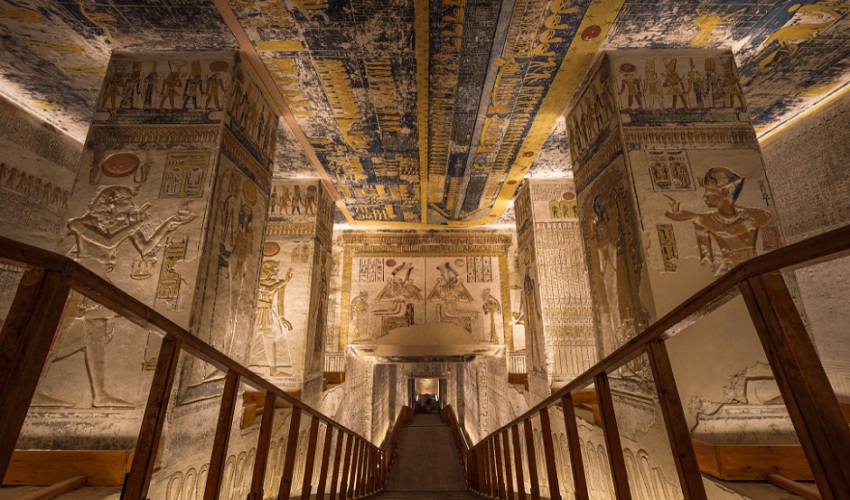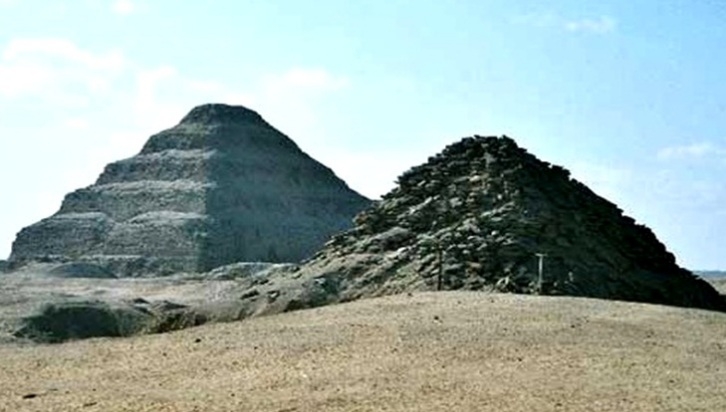New Kingdom Necropolis: A Journey Into Egypt’s Golden Age
When people imagine Cairo attractions and the many wonders of Egypt attractions, their minds often leap immediately to the Great Pyramids of Giza or the majestic Sphinx. Yet, some of the most breathtaking treasures of ancient Egypt lie not above the desert sands but hidden within the cliffs of Luxor’s west bank — the grand necropolis of the New Kingdom. This sprawling burial ground, with its valleys, tombs, and mortuary temples, is more than a cemetery. It is a masterpiece of art, architecture, and spirituality, reflecting Egypt’s golden age when pharaohs ruled with unmatched power and grandeur.
The New Kingdom Necropolis is a place where history, myth, and mystery come together. Here, travelers encounter not just the final resting places of kings and queens but entire stories carved into stone, preserved across millennia. Whether you are a first-time visitor to Egypt or a history enthusiast on a return trip, the necropolis offers an unforgettable window into the soul of an ancient civilization.
The Historical Context: Egypt’s Golden Age
The New Kingdom (c. 1550–1070 BCE) marked the height of Egypt’s power and cultural development. It was during this period that Egypt expanded into an empire, stretching its influence from Nubia in the south to the Levant in the north. Pharaohs such as Hatshepsut, Thutmose III, Amenhotep III, Akhenaten, and Ramses II brought wealth, innovation, and political might to their nation.
Unlike the Old Kingdom rulers who built massive pyramids near Cairo, the New Kingdom pharaohs sought different burial practices. They abandoned pyramid construction, which had become vulnerable to looting, and instead turned to hidden tombs cut deep into the limestone cliffs of western Thebes, modern-day Luxor. This was the origin of the famed Valley of the Kings and Valley of the Queens.
The necropolis represented not only a shift in architectural style but also a new spiritual focus. Pharaohs of this era believed in the journey of the soul through the afterlife, guided by elaborate funerary texts like the Book of the Dead, the Book of Gates, and the Amduat. The tomb walls became vast canvases covered in spells, scenes of gods, and maps of the underworld — guiding the pharaoh safely into eternity.
Valley of the Kings: Eternal Home of Pharaohs
The most famous component of the New Kingdom Necropolis is the Valley of the Kings. This dry desert valley, surrounded by rocky cliffs, became the royal burial ground for nearly 500 years. Over 60 tombs have been discovered here, belonging to rulers of the 18th, 19th, and 20th Dynasties.
The Tomb of Tutankhamun
The most celebrated discovery was the tomb of Tutankhamun, unearthed by Howard Carter in 1922. Though small compared to others, it was found nearly intact, filled with treasures that astounded the world: a golden funerary mask, chariots, jewelry, and statues. Today, many of these artifacts are displayed in the Grand Egyptian Museum in Cairo, but standing inside the tomb itself, visitors still sense the awe of Carter’s first glimpse.
The Tomb of Seti I
One of the most elaborately decorated tombs is that of Seti I, father of Ramses II. Its walls are adorned with colorful, detailed reliefs depicting complex funerary texts. Stretching deep into the hillside, it showcases the skill of artisans who turned limestone corridors into sacred passages.
Ramses II and Beyond
Pharaoh Ramses II, often called Ramses the Great, also built his tomb here, though looted centuries ago. Other notable rulers like Amenhotep II and Thutmose III also chose this valley for their eternal rest. Together, these tombs create a tapestry of Egypt’s greatest rulers, each striving to ensure immortality through architecture and art.

Valley of the Queens: Resting Place of Royal Women
South of the Valley of the Kings lies the Valley of the Queens, the burial ground for royal wives, daughters, and princes. Over 90 tombs have been identified, ranging from simple chambers to lavishly decorated complexes.
The most famous is the tomb of Queen Nefertari, beloved wife of Ramses II. Known as the “Sistine Chapel of Ancient Egypt,” this tomb is celebrated for its vibrant wall paintings that remain stunningly preserved. Scenes show Nefertari in graceful poses, guided by deities like Isis and Hathor. Access to the tomb is limited to preserve its fragile beauty, but for those who enter, it is a breathtaking experience.
The Valley of the Queens reflects the important role women played in royal and religious life during the New Kingdom. These tombs highlight the reverence given to queens, who were often depicted as divine consorts, mothers, and protectors of the pharaoh’s lineage.
Deir el-Medina: The Workers’ Village
An often-overlooked but equally fascinating part of the necropolis is Deir el-Medina, the village where the artisans and workers who built the royal tombs lived. These skilled laborers, painters, and stone carvers were granted special privileges and left behind a treasure trove of records.
Papyrus documents and ostraca (limestone fragments used as notepads) reveal details of their daily lives — from work schedules to complaints about wages and even love letters. The tombs of the workers themselves, while smaller, are adorned with personal and touching decorations, showing ordinary Egyptians’ hopes for the afterlife.
Deir el-Medina gives visitors an intimate look at the human side of the necropolis. It was here that the masterpieces of the Valley of the Kings were conceived, crafted, and perfected.
Art, Symbolism, and the Journey to Eternity
One of the most striking aspects of the New Kingdom Necropolis is its art. The tombs were not just burial chambers but elaborate spiritual roadmaps.
-
Funerary Texts: Walls were inscribed with passages from sacred books, designed to protect and guide the deceased through the dangers of the underworld.
-
Gods and Goddesses: Deities like Osiris, Anubis, Ra, and Hathor appear repeatedly, emphasizing their roles in resurrection and protection.
-
Symbolic Imagery: Solar boats, stars, and the scarab beetle symbolize rebirth and renewal.
-
Colors: The use of vibrant reds, blues, and golds conveyed divine power and immortality.
Even today, standing inside these tombs, visitors feel transported to another realm, surrounded by the beliefs and artistry of a people deeply connected to eternity.
Archaeological Discoveries and Legends
The necropolis has been a magnet for explorers and archaeologists for centuries. From ancient grave robbers to modern excavations, its tombs have inspired fascination and legends.
-
The discovery of Tutankhamun’s tomb sparked global Egyptomania and remains one of the greatest archaeological finds of all time.
-
Ongoing excavations continue to reveal hidden chambers, burial goods, and even mummies.
-
Myths of curses surrounding the Valley of the Kings, particularly after the deaths of those linked to Tutankhamun’s discovery, added mystery and allure.
For modern travelers, each tomb tells not only the story of a pharaoh but also the saga of exploration, preservation, and the enduring quest to unlock Egypt’s secrets.
Visiting the New Kingdom Necropolis
For those planning a trip, the necropolis is a highlight of any Egyptian journey. Though located near Luxor, tours often begin in Cairo, making it part of broader Cairo attractions and Egypt attractions itineraries.
Getting There
From Cairo, visitors can take a short flight to Luxor. The necropolis lies on the west bank of the Nile, accessible by car, taxi, or organized tour. Many Nile cruises also include stops here.
Tickets and Access
Entrance tickets vary by site, with additional fees for special tombs like Nefertari’s or Seti I’s. Some tombs are rotated to preserve artwork, so availability changes.
Tips for Visitors
-
Start early: The valley gets hot by midday.
-
Bring water and sunscreen: Essential for desert conditions.
-
Hire a guide: Expert explanations bring the artwork to life.
-
Photography rules: Flash photography is usually prohibited to protect paintings.
Nearby Attractions
-
Karnak Temple: A colossal complex on Luxor’s east bank.
-
Luxor Temple: Stunningly illuminated at night.
-
Hatshepsut’s Mortuary Temple: Rising dramatically from the cliffs.
-
Medinet Habu: Temple of Ramses III, with detailed reliefs.
Together, these sites make Luxor the greatest open-air museum in the world.

FAQs About the New Kingdom Necropolis
Q: Why did pharaohs stop building pyramids?
A: By the New Kingdom, pyramids were too vulnerable to looting. Hidden cliff tombs offered more security and aligned with evolving religious beliefs.
Q: How long does it take to explore the Valley of the Kings?
A: Most tours last 2–3 hours, allowing entry to 3–4 tombs. Enthusiasts may spend a full day.
Q: Is the tomb of Tutankhamun worth visiting?
A: Yes. While smaller than others, it contains the mummy of the boy king and carries immense historical significance.
Q: When is the best time to visit?
A: The cooler months, from October to April, offer the most comfortable conditions.
Q: Are children allowed?
A: Yes, but the hot climate and walking distances can be challenging for young children.
Why the New Kingdom Necropolis Belongs on Every Traveler’s List
The New Kingdom Necropolis is far more than an ancient cemetery. It is a journey into the heart of Egyptian civilization, where art, religion, and power converge in timeless beauty. For travelers seeking the best of Cairo attractions and Egypt attractions, few places offer such depth of history and wonder.
From the grandeur of the Valley of the Kings to the intimacy of Deir el-Medina, every site tells a story — of rulers who sought eternity, of artisans who left masterpieces, and of a culture that continues to inspire the world. Standing before the decorated walls, you cannot help but feel a connection across 3,000 years.
Visiting the necropolis is not just about history. It is about experiencing a legacy that shaped human civilization itself. Whether you are an adventurer, a history buff, or simply a curious traveler, the New Kingdom Necropolis promises an unforgettable chapter in your Egyptian journey.

